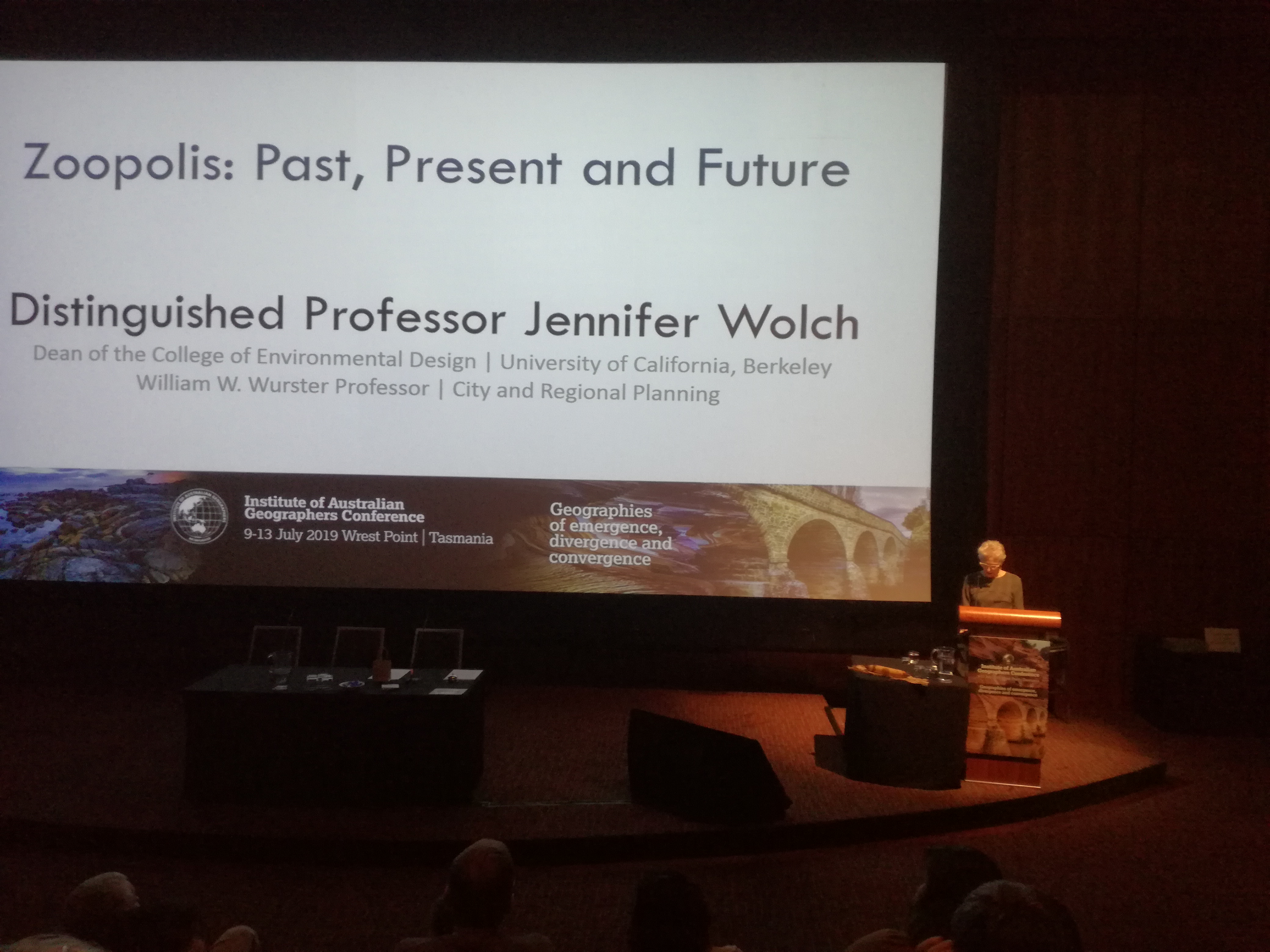This year’s conference of the Institute of Australian Geographers (IAG) ended a few days ago, and has been great escape for me, in many ways – the ethics, the location, the intellectual challenge, the people and the fantastic organisation. I would first like to thank the IAG for the generous travel grant that I have been awarded. Nga mihi nui.
Here goes a short report on the conference, from a non-geographer and a non-native speaker, beware.
My elevator pitch of this edition would speak of decolonialisation, place, place and intersectionality (see others’ tweets also, searching for #IAG2019Hobart!).
The decolonial perspective was made clear from the start. I think it was an extremely important aspect to state, and it was done through the official welcome with the transmission of the message stick, the organisers’ address, and most speakers acknowledgement of us standing on stolen and never settled lands of the Munina people. Time for action, now – so much is to be done.
The conference was a 3+ days maelstroem of concurrent sessions and ideas that I’ve tried to navigate as I could. It started with a brilliant opening: what a fantastic idea to give this job to philosophers! Boundaries were blown to pieces and of challenging questions were dropped. Namely: the role of place, vs space, and the responsibility of academia in the ethics of the assessment of interventions (or absences of intervention). UTAS Vice-Chancelor, Professor Rufus Black, and Professor Jeff Malpas stressed the importance of place and its poor current recognition. Professor Black advocated for academia to take charge of bringing place into the centre and proposing more adapted criteria of evaluating success – ones that relate to being proactive in the face of the global challenges we are facing, as opposed to benefit-cost ratios.
For me, there have been many highlights, despite having missed 5/6 of all concurrent sessions, as I haven’t figured out space-time replication yet. Many highlights and a short report, so here is my top of the pops, and I invite you to check their authors’ works:
- Our current system has a too narrow and inconsistent vision of “value”: time and social environmental dimensions are poorly addressed (or not at all). With possibly as little as 6 years to avoid a global warming of above 1.5°, environmental impacts can still come as an afterthought. In Florida for instance, oil is a driver of economic income, disproportionate cancer occurrences and destruction of fertile lands – Associate Professor Janelle Knox-Hayes. Global environmental assessments need to be rethought to reflect the holistic perspectives and outcomes are noted in policy documents. Rethinking them must involve being explicit about the sought values. Experts/academia should support policy makers representing perspectives rather than geographic boundaries or institutions – Noel Castree.
- Landscape is diversely constructed and valued. Australia’s imagery was built on the idea of an almost a blank slate for agriculture and leisure. Aboriginal people were mainly absent or portrayed as exotic and peaceful oddities (“much like kangaroos”) – Dr Greg Lehman.
- Cities considered successful can be places of important spatial injustice – inability of whole segments of the population to access and use the spaces. Melbourne presents structures of spatial discrimination (Claire Collie), and Black people remain unseen and/or not expected in some places (“white spaces”), resulting in differentiated levels of space ownership or downright discrimination (Carolyn Finney). It is urgent to examine what our systems suppress (shadow places, Fiona Miller).
“Space is movement”, said Claire. We could therefore argue that the inability of beneficial movements (i.e. access) destroys the city, if we understand “city” as an ensemble of potential connections and opportunities (Stanley Milgram, 1964). Claire added that “we cultivate the capacity to unsee” these dysfunctions.
Professor Jennifer Wolch concluded examining inter-species cohabitation and outcomes. She reminded of the importance of considering the non-human animals in geographic considerations: on the one hand, the broad impacts of animal agriculture on the landscapes, and on the other hand human land use patterns as influence on habitats. Professor Wolch called for a new manifesto that helps include animals in urban decision making and economic development, in an era of climate change and inequities. I would extend the scope of a new manifesto to include the dimensions of value, place, social and environmental justice, joining the urgency and the key aspects of the landscape architects 1966 and 2016 Declarations of Concern. Maybe a task for next year’s (50th!) edition? And if I may bring a suggestion from the “outside”: geographers should reach out to policymakers, bringing analysis and decision support to help shape the significantly better outcomes we need.
I’ll add here that my personal and unofficial end of the conference was at punk gigs at the mythic Tote, Melbourne, with Joshua Pitt (commissioning editor at Palgrave Macmillan specialising in Human Geography) and Tyler Sonnichsen, cultural/musical/urban geography PhD, lecturer and author of Capitals of Punk). What else?

